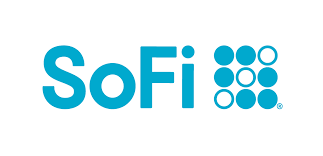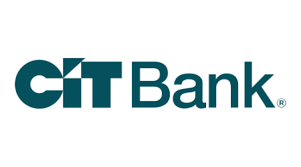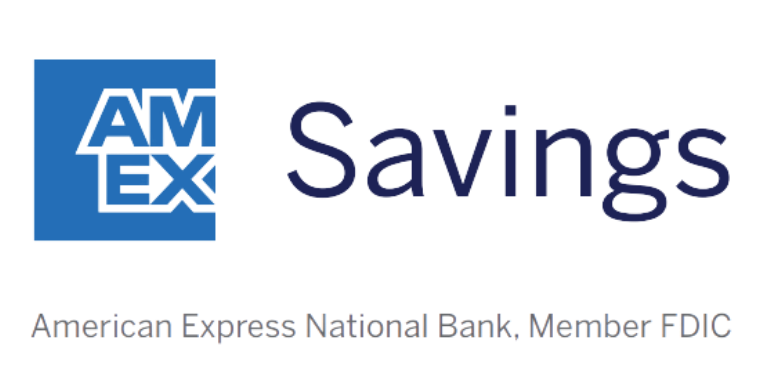Getting your credit in order is an important part of managing your personal finances. If you're facing a less-than-perfect credit history, it might be tempting to call credit repair companies -- but that's not the best next step.
Here's everything you need to know about credit repair companies, whether they're worth it, and how to repair your own credit.
What is a credit repair company?
Credit repair companies are organizations that claim to help consumers improve their credit in exchange for a fee. These work with credit bureaus and creditors on your behalf to remove mistakes from your credit report. While many of these companies are scams, there are legitimate credit repair companies.
That said, you can do everything credit repair companies do on your own and avoid paying costly monthly fees.
How do credit repair companies work?
Credit repair companies work on your behalf to remove negative marks from your credit report. There are a couple strategies they use to accomplish this:
- Challenging the negative marks on your credit report, with the goal of getting credit bureaus to remove them.
- Asking creditors to verify negative marks. If a creditor fails to provide verification, it has to stop reporting those marks.
You can do both of these things on your own. You don't need to pay credit repair companies for these services.
Most credit repair companies charge a monthly fee and offer several packages that range from basic to advanced. More expensive tiers offer things like credit monitoring and credit score analysis. They may also send cease and desist letters to debt collectors on your behalf. Again, these are all things you can do yourself.
Compare savings rates
Make sure you're getting the best account for you by comparing savings rates and promotions. Here are some of our favorite high-yield savings accounts to consider.
| Account | APY | Promotion | Next Steps |
|---|---|---|---|

Open Account for SoFi Checking and Savings
On SoFi's Secure Website.
Rating image, 4.50 out of 5 stars.
4.50/5
Our ratings are based on a 5 star scale.
5 stars equals Best.
4 stars equals Excellent.
3 stars equals Good.
2 stars equals Fair.
1 star equals Poor.
We want your money to work harder for you. Which is why our ratings are biased toward offers that deliver versatility while cutting out-of-pocket costs.
|
up to 3.80%²
Rate info
You can earn the maximum APY by having Direct Deposit (no minimum amount required) or by making $5,000 or more in Qualifying Deposits every 30 days. See SoFi Checking and Savings rate sheet at: https://www.sofi.com/legal/banking-rate-sheet.
Min. to earn: $0
|
New customers can earn up to a $300 bonus with qualifying direct deposits!¹
|
Open Account for SoFi Checking and Savings
On SoFi's Secure Website. |

Open Account for CIT Platinum Savings
On CIT's Secure Website.
Rating image, 4.50 out of 5 stars.
4.50/5
Our ratings are based on a 5 star scale.
5 stars equals Best.
4 stars equals Excellent.
3 stars equals Good.
2 stars equals Fair.
1 star equals Poor.
We want your money to work harder for you. Which is why our ratings are biased toward offers that deliver versatility while cutting out-of-pocket costs.
|
4.10% APY for balances of $5,000 or more
Rate info
4.10% APY for balances of $5,000 or more; otherwise, 0.25% APY
Min. to earn: $100 to open account, $5,000+ for max APY
|
Earn a bonus of at least $225 after a one-time deposit of $25,000+.
Transfer a one-time deposit of $25,000-$49,999.99 for a bonus of $225. Transfer a one-time deposit of $50,000+ for a bonus of $300. Account must be opened with code PS2025 while this promotion lasts, and funded within 30 days. Bonus will be fulfilled within 60 days from the funding date. There is no period of time where the customer will be required to maintain the funds. Account must be open when bonus is credited. One bonus per account and primary customer. Bonus will be credited into the Platinum Savings Account that fulfills the funding requirement. Funding can be deposited all at once or incrementally.
|
Open Account for CIT Platinum Savings
On CIT's Secure Website. |

Open Account for American Express® High Yield Savings
On American Express's Secure Website.
Rating image, 4.00 out of 5 stars.
4.00/5
Our ratings are based on a 5 star scale.
5 stars equals Best.
4 stars equals Excellent.
3 stars equals Good.
2 stars equals Fair.
1 star equals Poor.
We want your money to work harder for you. Which is why our ratings are biased toward offers that deliver versatility while cutting out-of-pocket costs.
|
3.70%
Rate info
3.70% annual percentage yield as of April 11, 2025. Terms apply.
Min. to earn: $0
|
N/A
|
Open Account for American Express® High Yield Savings
On American Express's Secure Website. |
SoFi disclosure:
¹ New and existing Checking and Savings members who have not previously enrolled in Direct Deposit with SoFi are eligible to earn a cash bonus of either $50 (with at least $1,000 total Direct Deposits received during the Direct Deposit Bonus Period) OR $300 (with at least $5,000 total Direct Deposits received during the Direct Deposit Bonus Period). Cash bonus will be based on the total amount of Direct Deposit. Direct Deposit Promotion begins on 12/7/2023 and will be available through 1/31/26. See full bonus and annual percentage yield (APY) terms at sofi.com/banking#1.
² SoFi members who enroll in SoFi Plus with Direct Deposit or by paying the SoFi Plus Subscription Fee every 30 days or with $5,000 or more in Qualifying Deposits during the 30-Day Evaluation Period can earn 3.80% annual percentage yield (APY) on savings balances (including Vaults) and 0.50% APY on checking balances. There is no minimum Direct Deposit amount required to qualify for the stated interest rate. Members without either SoFi Plus or Qualifying Deposits, during the 30-Day Evaluation Period will earn 1.00% APY on savings balances (including Vaults) and 0.50% APY on checking balances. Only SoFi Plus members are eligible for other SoFi Plus benefits. Interest rates are variable and subject to change at any time. These rates are current as of 1/24/25. There is no minimum balance requirement. Additional information can be found at http://www.sofi.com/legal/banking-rate-sheet. See the SoFi Plus Terms and Conditions at https://www.sofi.com/terms-of-use/#plus.
³ We do not charge any account, service or maintenance fees for SoFi Checking and Savings. We do charge a transaction fee to process each outgoing wire transfer. SoFi does not charge a fee for incoming wire transfers, however the sending bank may charge a fee. Our fee policy is subject to change at any time. See the SoFi Checking & Savings Fee Sheet for details at sofi.com/legal/banking-fees/.
⁴ SoFi Bank is a member FDIC and does not provide more than $250,000 of FDIC insurance per depositor per legal category of account ownership, as described in the FDIC’s regulations.
Any additional FDIC insurance is provided by the SoFi Insured Deposit Program. Deposits may be insured up to $3M through participation in the program. See full terms at SoFi.com/banking/fdic/sidpterms. See list of participating banks at SoFi.com/banking/fdic/participatingbanks.
⁵ We’ve partnered with Allpoint to provide you with ATM access at any of the 55,000+ ATMs within the Allpoint network. You will not be charged a fee when using an in-network ATM, however, third-party fees incurred when using out-of-network ATMs are not subject to reimbursement. SoFi’s ATM policies are subject to change at our discretion at any time.
⁶ Early access to direct deposit funds is based on the timing in which we receive notice of impending payment from the Federal Reserve, which is typically up to two days before the scheduled payment date, but may vary.
⁷ Overdraft Coverage is limited to $50 on debit card purchases only and is an account benefit available to customers with direct deposits of $1,000 or more during the current 30-day Evaluation Period as determined by SoFi Bank, N.A. The 30-Day Evaluation Period refers to the “Start Date” and “End Date” set forth on the APY Details page of your account, which comprises a period of 30 calendar days (the“30-Day Evaluation Period”). You can access the APY Details page at any time by logging into your SoFi account on the SoFi mobile app or SoFi website and selecting either (i) Banking > Savings > Current APY or (ii) Banking > Checking > Current APY. Members with a prior history of non-repayment of negative balances are ineligible for Overdraft Coverage.
What to watch out for with credit repair services
The world is rife with credit card scams and credit repair scams. Scammers tend to target people in financially vulnerable positions. Proceed with caution, and avoid credit repair services that:
- Tell you to avoid contacting credit bureaus directly
- Ask you to pay a fee upfront before they've done any work
- Insist on disputing information on your credit report that you know is accurate
- Promise quick credit repair or instant results
- Claim they can give you a clean slate, new identity, or alternative Social Security number
- Tell you to lie or knowingly provide false information
- Don't explain what your legal rights are
Be sure to ask questions before signing up for any credit repair services. If you don't get clear answers, that's a red flag. Even if a service is legitimate, consider whether it's worth paying for something you could do on your own.
How can I repair my credit myself?
It's completely possible to repair your credit without paying credit repair companies. In many cases, it's preferable to rebuild credit on your own. Here's how.
Pull your credit report with all three credit bureaus
You're legally entitled to one free credit report each year from all three of the major credit bureaus (TransUnion, Equifax, and Experian). You can access these at AnnualCreditReport.com.
Your credit report will help you understand why your credit is low. Also, you might spot errors that are dragging your score down.
Dispute any incorrect information
If you find errors on your credit report, you'll want to get them removed.
You can file a dispute online with each credit bureau, or you can send them a letter of dispute. They might ask you for additional supporting information or documents as they investigate your claim.
If the credit bureau approves your dispute and removes the false information, you should see a credit score boost.
Pay off credit card debt, especially high balances
Average household debt hit $14.35 trillion in 2020, so if you're carrying a credit card balance, you're not alone. However, paying down those balances is one of the best ways to increase your credit score.
Not only will this help you improve your payment history, but it will also improve your credit utilization rate, which is one of the most important factors in determining your credit score. Here's how you find your credit utilization rate: Add up all of the credit card debt you owe, and then add up your credit limits across all of the credit cards you have open. Divide your overall debt by your overall credit limit, and you'll get your credit utilization rate.
In other words, this number is the percentage of your overall available credit you're actually using, and it should stay below 30%. This is why paying off high balances that are bumping up against your credit limit can significantly and quickly improve your credit.
Build a history of on-time payments
If you're not currently paying off debt, finding another way to build up a positive payment history can help build your credit back up.
Using a low-limit credit card a few times each month and paying off your balance in full before the due date is an effective way to do this. Just make sure to avoid carrying a balance. If the temptation to overspend and fall back into debt is too strong, it might be best to hold off on this step.
If you can't qualify for a regular credit card, try this method with a credit card for bad credit.
Keep old accounts open
Your average age of accounts is an important factor in determining your credit score, so having older credit accounts on your credit history is beneficial.
If you've paid off old credit cards and don't plan to use them anymore, and they don't charge annual fees, keep those credit cards open. This is especially important if you've had them for a while.
Wait for negative marks to fall off your credit history
If you have some accurate negative marks dragging down your score, such as late payments or collections, the best you can do is wait for them to fall off of your credit report.
The good news: Nothing lasts forever when it comes to your credit. Both late payments and debt collections fall off your credit report after seven years. Bankruptcies are removed from your report in either seven or 10 years.
Monitor your credit
As you work to repair your credit, it's a good idea to monitor your credit score. Both credit scoring agency FICO® and the credit bureaus offer credit monitoring services for a monthly fee. This fee is far lower than what credit repair companies charge.
There are also plenty of credit cards that offer your credit score for free. Keeping track of your credit score as you work on repairing your credit will help you monitor your progress and give you a sense of which of your actions are most effective.
How long does credit repair take?
Credit repair can take anywhere from a few months to several years. The time it takes depends on your individual situation. Credit repair companies that guarantee fast credit repair or promise they can fix your credit within a set timeline are most likely scams.
If the only negative marks on your credit report are errors that can be successfully disputed and removed, you'll likely see an improvement in your credit score pretty quickly. On the other hand, if you have late payments, collections accounts, and other similar negative marks, it will take some time and a lot of diligence to rebuild your credit.
Are there legitimate credit repair companies?
Some credit repair companies are legitimate, but be sure to check credit repair reviews before agreeing to work with anyone. The best credit repair companies work with you to help you repair and rebuild your credit the old-fashioned way.
However, any work they do on your behalf is work you could do yourself. You're paying for the convenience of not having to do as much of the legwork, and there's no guarantee your credit will actually improve.
How much do credit repair companies charge?
You're probably wondering, "How much does credit repair cost?" The fees for credit repair companies vary, but they often start at around $80 to $90 per month for basic services. Fees go up from there if you choose more advanced tiers.
You might find advertisements for free credit repair companies, but this usually just means you'll get a brief consultation for free. They'll start charging you once they begin to perform credit repair services.
Improving your credit score without credit repair
Considering how costly credit repair companies can be, it's definitely worth it to improve your credit score without a credit repair service. Self credit repair involves checking your credit, disputing any errors, and working hard to pay off debt and build a history of on-time payments.
Credit repair scams to avoid
Beware of any credit repair companies that make unreasonable promises. These might include promises to:
- Erase negative marks from your credit report
- Improve your score by a certain number of points
- Accomplish quick credit repair within a certain time frame
Avoid paying credit repair companies upfront and instead opt for services that do the work to improve your credit before taking payment. Any credit repair companies that ask you to lie or furnish false information in a credit dispute or application for credit should also be avoided.
Don't you wish you could take a peek inside a credit card expert's wallet sometimes? Just to see the cards they carry? Well, you can't look in anybody's wallet, but you can check out our experts' favorite credit cards. Get started here:
FAQs
-
While many credit repair companies are scams, some are legitimate. Top credit repair companies use traditional methods for helping you repair credit such as disputing errors on your credit report and working with your creditors. That being said, you can repair your own credit without paying a steep fee to credit repair companies.
-
Credit repair companies contact the credit bureaus to dispute negative marks on your credit report on your behalf. These companies ask creditors for verification of any negative marks in an attempt to get them to stop reporting. Sometimes these companies also work with you to help you understand your credit report and monitor your credit.
-
Credit repair can take anywhere from a few months to several years or more. It all depends on your personal situation, but rebuilding credit takes time and patience.
-
Yes, you can fix your credit without credit repair companies. All the services provided by credit repair companies are things you can do on your own.
We're firm believers in the Golden Rule, which is why editorial opinions are ours alone and have not been previously reviewed, approved, or endorsed by included advertisers. Motley Fool Money does not cover all offers on the market. Motley Fool Money is 100% owned and operated by The Motley Fool. Our knowledgeable team of personal finance editors and analysts are employed by The Motley Fool and held to the same set of publishing standards and editorial integrity while maintaining professional separation from the analysts and editors on other Motley Fool brands. Terms may apply to offers listed on this page.